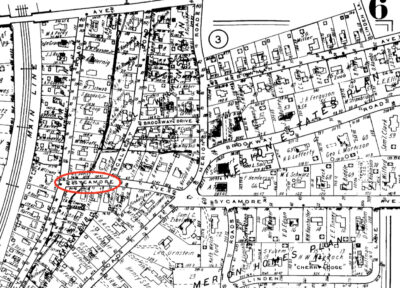 It looks like a public road, it’s used like a public road, but is it one?
It looks like a public road, it’s used like a public road, but is it one?
My township seems to have lots of road controversies. There was the declined offer of a cul-de-sac in a proposed development, meaning the road would need to remain private and not the responsibility of the municipality. (See “Thanks, But No Thanks,” May/June 2021) There was the road that had been buried 50 years ago under the pavement of a public parking lot, lack of proper vacation only discovered after a developer submitted plans for a structure on top of it. (See “Public Benefit,” April 2015). The most recent twisted tale to hit local headlines is about 225 feet of a paved and curbed section of Sycamore Avenue.
Looking at it and driving on it, no one considers this one-block section of suburban street as anything but a public way. There is no sign indicating its private status, no demarcation by differences in pavement, and the street sign at the intersection is of the same unique historic style as found throughout the township. The road provides one of only two drivable access ways to the nearby train station and post office. The general public uses it freely.
This single block of roadway first appears on 1948 tax maps, during the decade that Sycamore Avenue was created. Five individual home lots abut this road segment, two with driveways opening onto it. The difficulty is that the 1940s owners along this stretch of Sycamore Avenue decided not to dedicate it to the township when the rest of the road was, opting (for some reason lost in history) to keep it private. Over the ensuing decades, both the township and residents forgot whose responsibility this road was, and everyone—public and township—began treating it as a public dedicated way. Everyone drove on it, and the township paved and snowplowed it.
It was only this summer, as he was reviewing snow removal routes to be ready for winter, that the township’s public works director somehow discovered the non-public status of this single block of Sycamore Avenue.
The can of worms peeled open; the road needs repaving. Who should pay, now that it’s known that it is not a public road? Then again—is that an accurate assessment of its status?
Currently the roadbed belongs to the five abutting residential lot owners. Neither they nor prior owners have ever done anything to prevent others from using the road for the past 70-plus years. Township residents and township officials have all treated it as a public thoroughfare, complete with paving and plowing and driving and bus routing. Had it been treated as private, there would have been much less traffic, and much less wear and tear on it.
But now that the record of private ownership has come to light, the abutting owners have been assessed the cost of repaving it. Ouch! The township commissioners must now vote on two items: (1) acceptance of this section of road, and (2) reimbursement to the abutting owners for the repair. Incredibly, a preliminary vote on the second aspect split nearly evenly, only narrowly favoring the repayment. Whatever happened to equity, the attempt to look beyond stringent adherence to rules when such applications don’t yield a fair result?
There are rights that accrue to anyone who uses land (or a road) for a statutorily prescribed number of years, openly and known to the true owner. Such actions give rise to prescriptive rights if the intent is only to use the land (or road) and not claim ownership of it. A claim of ownership would be an adverse possession claim, but this is just a claim of a right to use a strip of land that looks like every other road in the area. If the owners were aware of their title (but were they?), then possibly the public gained rights by prescription, making it still private property but burdened by public use.
As surveyors, we all know about the need for both an offer and an acceptance for there to be a true dedication. But if the public has used it and a governmental entity has been maintaining it for well beyond any statutorily required number of years for adversity or prescription, could there possibly be an implied dedication, with an implied acceptance? Why would the township take care of it for so long if it didn’t believe it was a public road?
In the jurisdictions where I’m familiar with the rules, it is not legal for public funds to be spent on maintaining private roads unless landowners pay the cost. While repaving costs are being assessed now, this is definitely not the first expenditure on maintenance that has occurred since the road was created and opened. Maybe the owners should erect a tollbooth to raise funds for repaving.